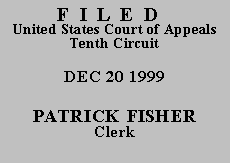

| UNITED STATES OF AMERICA,
vs.
JAMES EMMANUEL EARLS |
|
A district court has the power to impose a consecutive sentence, see 18 U.S.C. § 3584(a), and we presume that the district court has considered the factors contained in 18 U.S.C. § 3553(a), as required by § 3584(b). See United States v. Rose, 185 F.3d 1108, 1110-11 (10th Cir. 1999).
We reject each contention raised by Mr. Earls on appeal. First, in response to Mr. Earls' argument that the statutory maximum term of imprisonment on count 1 of the indictment was four years, the object of the conspiracy alleged was "to possess with the intent to distribute and to distribute amphetamine and/or methamphetamine," 1 R. Indict. at 2, resulting in a statutory maximum of twenty years. The object was not the use of a communication facility with a four-year statutory maximum; merely because such use was alleged as a manner and means of the conspiracy does not equate to another object. Second, the district court did not resentence Mr. Earls on counts 23 and 24 as he contends; rather, the district court resentenced him on count 1, but ran the sentence consecutively, rather than concurrently as before. The district court acted well within the "sentencing package" doctrine which allows the district court, unless specifically limited by the mandate, to refashion the entire sentence. See United States v. Easterling, 157 F.3d 1220, 1223 (10th Cir. 1998); United States v. Hicks, 146 F.3d 1198, 1201 (10th Cir.), cert. denied, 119 S. Ct. 361 (1998). Third, the district court did not abuse its discretion in not conducting de novo resentencing and reconsidering the type and quantity of drug involved. Although the district court plainly had jurisdiction to reconsider, it came to the completely reasonable conclusion that these issues had been raised, in one form or another, or were without merit given the record evidence, and declined to reconsider. See United States v. Moore, 83 F.3d 1231, 1235 (10th Cir. 1996). Fourth, the argument that amphetamine's reclassification as a Schedule II controlled substance has lapsed because Congress has not made a conforming amendment to the schedules in 21 U.S.C. § 812, is not persuasive given the repeated holding that the reclassification is in accordance with § 811. See United States v. Lafoon, 978 F.2d 1183, 1184-85 (10th Cir. 1992); United States v. Sullivan, 967 F.2d 370, 373 (10th Cir. 1992); see also United States v. Segler, 37 F.3d 1131, 1133 (5th Cir. 1994). Finally, the district court could rely upon the testimony of a cooperating government witness, Gerald Merriman; Mr. Earls' arguments are foreclosed by United States v. Singleton, 165 F.3d 1297 (10th Cir.) (en banc), cert. denied, 119 S. Ct. 2371 (1999), and the panel decision in the direct appeal, see Earls, 42 F.3d at 1326.
AFFIRMED.
Entered for the Court
Paul J. Kelly, Jr.
Circuit Judge
*. This order and judgment is not binding precedent, except under the doctrines of law of the case, res judicata, and collateral estoppel. This court generally disfavors the citation of orders and judgments; nevertheless, an order and judgment may be cited under the terms and conditions of 10th Cir. R. 36.3.
**. After examining the briefs and the appellate record, this three-judge panel has determined unanimously that oral argument would not be of material assistance in the determination of this appeal. See Fed. R. App. P. 34(a); 10th Cir. R. 34.1 (G). The cause is therefore ordered submitted without oral argument.